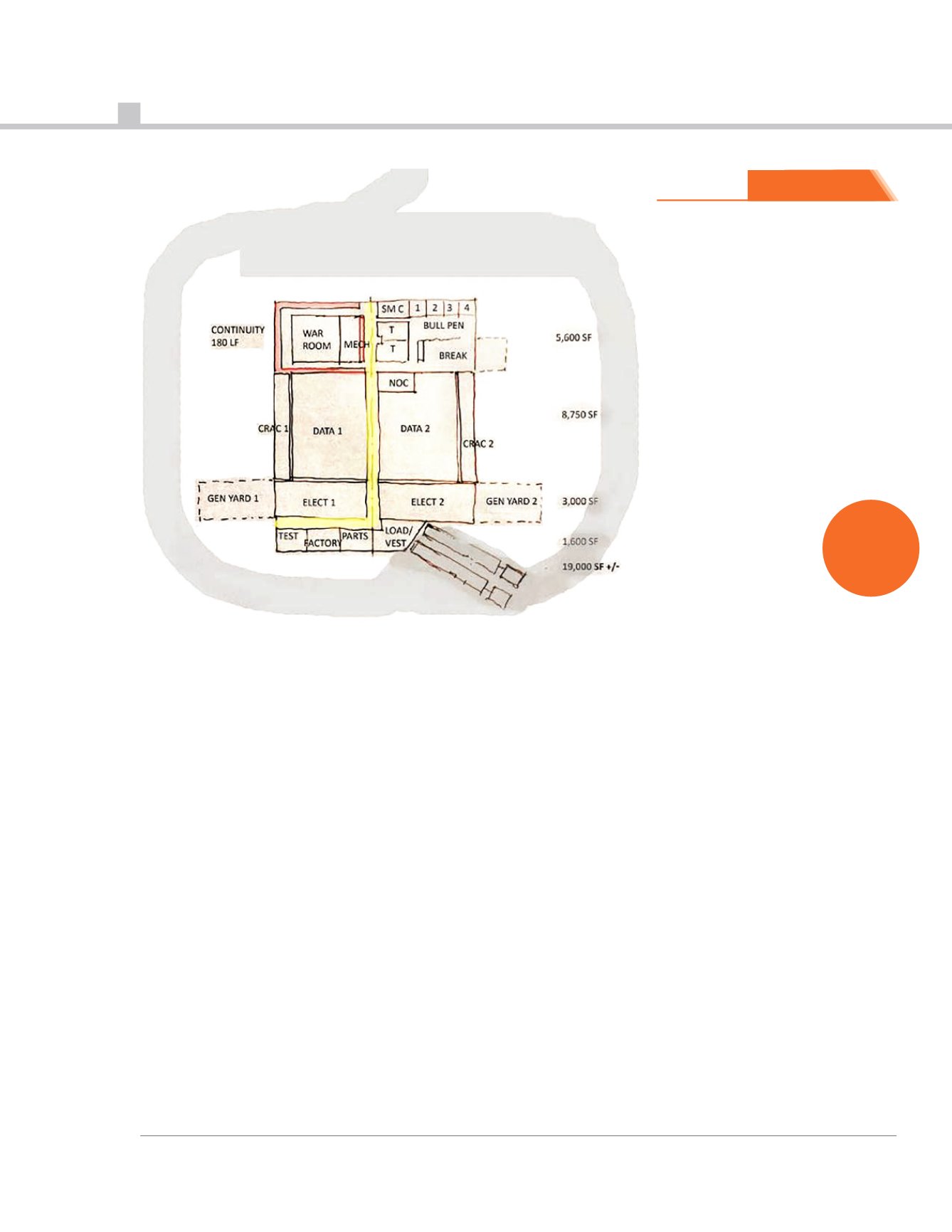

36
7X24 MAGAZINE FALL 2015
able to facilitate the discussion to
efficiently focus on the items that will
meet the requirements, while helping
eliminate those that will fall out. they
are also able to help consider the
various alternatives that might be
available to allow flexibility to meet
the ‘what if’ scenarios that always
come up in these discussions.
once a sufficient level of information
is gathered and agreed upon, and a
reliable capital budget projection is
created, the architect/engineer/
planning professional takes some time
aside to rough out a concept plan.
this plan should approximate space
allocations, adjacencies, white space
areas, growth areas, approximate
equipment locations, etc. an
experienced professional should be
capable of performing this task in just
a few hours. once completed to a
sufficient level of detail, the
stakeholders are brought back to
challenge the concept plan. those
challenges are discussed and
modifications are agreed upon prior
to the conclusion of the meeting.
once all are in agreement, the
architect/engineer/planning
professional finalizes the concept
plan. this can be done at the meeting
or shortly after the meeting (see
figure 2).
an important aspect of this meeting is
that all stakeholders are actively
engaged. it is recommended the
stakeholders are able to remain
focused on the process. this process
can take a couple of days, so time
should be allocated to allow their
participation.
STEP 3
once the concept plan is developed
and agreed upon, the capital budget
estimate can be developed. because
of the level of detail that can be
generated in a short period of time,
the estimate should be relatively
detailed and not just a rule of thumb
estimate. this level of detail will allow
for a more reliable capital estimate
that can be utilized to make informed
business decisions. the concept plan
will also raise the level of comfort for
all involved that the facility under
consideration will meet the
operational needs of those charged
to make it work.
THERESULT
a reliable early planning process that
quickly guides a project to its
successful conclusion is essential. the
result of the process must be a capital
budget owners can rely on to make
sound business decisions, and a level
of certainty that the proposed facility
will meet the business and
operational needs of the owner. when
properly performed, this process can
meet those objectives.
this process is normally performed
quite quickly and as a result can be
quite intense. the participants need
to be “in the moment” and dedicated
to the successful outcome. the
desired outcome of the process it to
achieve a reliable capital budget,
create a concept that will meet the
business and operational needs, and
just as importantly, garner the
necessary “buy-in” from the
stakeholders. this early planning
process allows these goals to be
achieved in a relatively short period of
time.
Project Budgeting
Figure 2
Raymond Johnson, II, PE, is Director of Mission Critical Design at Wendel. He can he reached at
[email protected]your
PLan

















